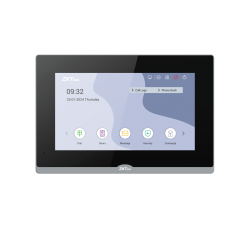How To Implement A Facial Recognition System

A facial recognition system is a biometric technology that uses facial features to identify or verify individuals. It has become increasingly popular in recent years, with the advancement of machine learning and artificial intelligence technologies. From unlocking smartphones to security systems, facial recognition has various applications in our daily lives.
In this guide, we will discuss how to implement a facial recognition system from scratch. We will cover the basic concepts, techniques, and tools required for building a robust and accurate system.
Determine its purpose:
Before implementing a facial recognition system, determine its purpose. Are you using it for security, attendance tracking, customer authentication, or visitor management? Understanding your specific needs will help in choosing the right system with features that align with your goals.
Choose the reliable software and compatible hardware:
Facial recognition systems require reliable software and compatible hardware. Look for a solution with high accuracy, fast processing, and strong data encryption. Depending on your requirements, you may need cameras with infrared capabilities for low-light environments or cloud-based solutions for remote access.
Ensure compliance with privacy regulations:
Since facial recognition involves biometric data, it is essential to comply with local and international data protection laws. Inform users about data collection, obtain necessary consent, and implement secure storage methods to protect sensitive information.
Set up cameras and infrastructure:
Proper camera placement is key for accurate recognition. Install cameras at appropriate angles and ensure good lighting conditions for clear image capture. If the system is used for access control, integrate it with door locks, gates, or other security features.
Train the system for better accuracy:
Facial recognition software improves over time with continuous learning. Start by training the system with high-quality images of authorised individuals. Regularly update the database to improve accuracy and reduce false positives or negatives.
Conduct testing and calibration:
Before deploying the system, conduct thorough testing to evaluate its performance. Check for speed, accuracy, and security vulnerabilities. Make necessary adjustments, such as refining recognition thresholds or improving camera positions, to optimise results.
Once implemented, regular maintenance is necessary to keep the system running efficiently. Update software, monitor system logs, and address any technical issues quickly. Continuous monitoring ensures the system remains secure and effective. By following these steps, businesses can successfully integrate this system into their operations, enhancing security, efficiency, and user convenience.



